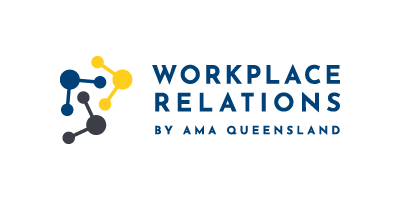Visa holders
When hiring individuals on a visa, be aware of several critical factors to ensure compliance with Australian immigration laws to protect both the employee and the practice.

When hiring individuals on a visa, be aware of several critical factors to ensure compliance with Australian immigration laws to protect both the employee and the practice.
Such as:
- Understanding visa types and conditions
- Work eligible visas – familiarise yourself with visa types that permit work, such as the temporary skills shortage (TSS) visa (subclass 482), Working holiday maker visa (subclasses 417 and 462) and permanent residency visas.
- Each visa has specific conditions regarding the type of work allowed, employment duration, location and restrictions (e.g. maximum hours for student visas)
- For visas like the TSS visa, employers must act as sponsors which involves additional obligations and documentation
- Work rights verification
- Use the visa entitlement verification online (VEVO) system to check a potential employees work rights and ensure their visa permits the work they are being hired to do Check visa conditions online (VEVO)
- Keep updated records of employee’s visa status and expiration dates to avoid employing someone who becomes unauthorised to work
- Employer sponsorship requirements
- To sponsor employees on visas such as the TSS visa, employers must first become approved Standard Business Sponsors (SBS) by meeting eligibility requirements.
- Employers must nominate the job position and ensure it meets criteria such as being on the skilled occupation list.
- For many sponsored visas, employers must demonstrate they attempted to fill the role locally before hiring from overseas.
- Compliance with immigration laws
- Employers must ensure they are not employing individuals without proper work rights. Hiring unauthorised workers can lead to severe penalties, including fines and reputational damage and may restrict opportunities to become a sponsor in the future.
- Maintain proper documentation of visa checks and ensure ongoing compliance.
- Pay and conditions
- Ensure that employees on visas receive fair pay and conditions in line with Australian workplace laws and the applicable award or enterprise agreement.
- Sponsored employees (e.g. TSS visa holders) must be paid at or above the temporary skilled migration income threshold and receive market equivalent pay. For more information, go to Salary requirements to nominate a worker
- Anti-discrimination laws
- A selection criterion is a good way to ensure the practice does not discriminate based on visa status during the recruitment process. This approach ensures hiring decisions are based on merit and qualifications, not immigration status.
- Impact on business operations
- Understand the processing times and costs associated with visa applications and sponsorship as they can affect hiring times.
- Factor in the responsibilities of managing sponsored employees such as monitoring their visa conditions and reporting the changes to the Department of Home Affairs.
- Tax and superannuation obligations
- Ensuring compliance with tax and superannuation obligations as visa holders are typically subject to Australian Tax laws and may be eligible for superannuation contributions.
- Employee retention and pathways
- For long-term roles, consider pathways to permanent residency for visa holders. This can help retain skilled employees and provide job security for the worker.
- For long-term roles, consider pathways to permanent residency for visa holders. This can help retain skilled employees and provide job security for the worker.
Some visa options available require the visa applicant’s potential employer to become an approved sponsor, therefore the practice may need to become an approved sponsor. If you are unsure about the requirements of hiring an employee on a visa, the Australian Government’s Department of Home Affairs – Immigration and citizenship website is a great place to start Check visa details and conditions. Alternatively, you can seek advice from a registered migration agent or immigration lawyer to help you navigate the complex visa and sponsorship process.
This month, there have been several significant updates which impact visa holders and employers:
Introduction of the skills in demand (SID) Visa
The Temporary Skill Shortage (TSS) subclass 482 visa has been replaced by the new Skills in Demand (SID) visa. This temporary visa lets an employer sponsor a suitably skilled worker to fill a position they cannot find in Australia Skills in Demand visa (subclass 482).
Adjustments to the core skills occupation list (CSOL)
The CSOL has been updated to reflect the evolving labour market. Newly added occupations include data analysts, cybersecurity experts and clean energy technicians, while some retail and administrative roles have been removed. The Core Skills Occupation List.
By addressing all the considerations above, you can confidently and legally hire employees on visas, ensuring a smooth and compliant hiring process that benefits both the employee and the practice.
 | AMA Queensland Workplace RelationsPhone: 07 3872 2264
|